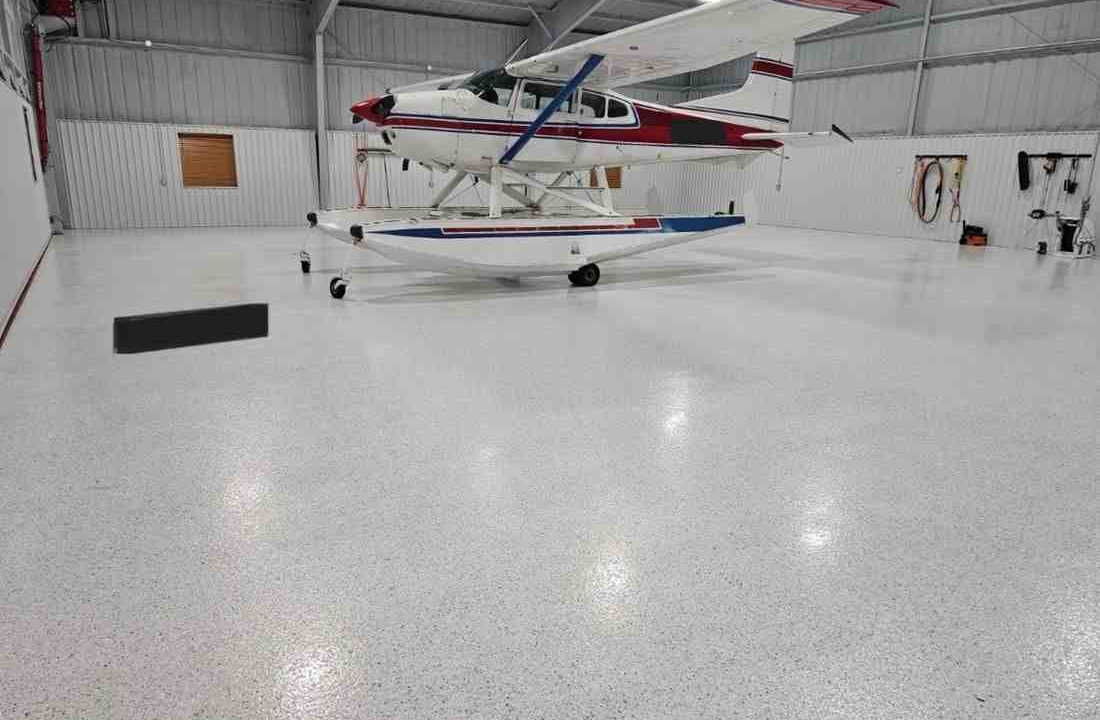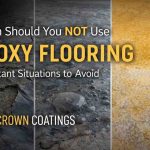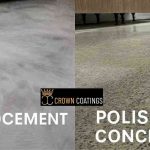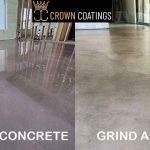Aircraft hangars require more than just wide-open space—they demand specialized flooring systems that can handle heavy aircraft loads, fuel spills, and high foot traffic, all while remaining safe and low-maintenance.
In this guide, we’ll walk through the key factors to consider when choosing flooring for an aircraft hangar, recommended materials like epoxy and urethane coatings, and tips to ensure long-term durability in aviation environments.
Why Flooring Matters in Aircraft Hangars?
Unlike traditional commercial or industrial spaces, hangars are exposed to:
-
Jet fuel and oil spills
-
Extreme weight from stationary and moving aircraft
-
Abrasion from wheeled equipment
-
Temperature changes and outdoor exposure
This means hangar floors must be high-performance, easy to clean, and tough enough to endure abuse without cracking, staining, or becoming slippery.
Essential Qualities of Aircraft Hangar Flooring
When choosing the right floor for your aviation facility, prioritize the following features:
-
✅ Chemical Resistance: Aviation-grade floors should resist jet fuel, hydraulic fluids, and solvents.
-
✅ Load-Bearing Strength: Flooring must withstand immense static and dynamic loads, particularly in MRO (maintenance, repair, overhaul) environments.
-
✅ Slip Resistance: Safety is critical—especially in fast-paced work zones. Anti-slip additives are a must.
-
✅ UV & Abrasion Resistance: For hangars with exterior exposure or heavy wheeled equipment.
-
✅ Low Reflectivity or High Gloss (Optional): Some facilities prefer high-gloss epoxy for visibility; others opt for satin finishes to reduce glare.
Top Flooring Options for Hangars
1. Epoxy Flooring Systems
Epoxy coatings are the most popular option for hangars because they offer:
-
Seamless, non-porous surfaces
-
High compressive strength
-
Customizable slip resistance
-
Long-lasting durability
Related reading: Why Epoxy Is a Great Choice for Industrial Spaces
2. Polyurethane or Urethane Coatings
Often used as a topcoat over epoxy, urethane adds:
-
Better UV resistance
-
Chemical protection
-
Extended durability in outdoor-exposed hangars
3. Polished Concrete (With Sealers)
Budget-friendly and visually clean. While polished concrete is easy to maintain, it lacks the chemical resistance of epoxy unless properly sealed.
4. Hybrid Floor Systems
Combining epoxy base layers with polyurethane topcoats creates dual-performance systems that handle the full spectrum of aviation needs—from chemical protection to skid resistance.
Epoxy Coatings: The Leading Solution
Hangar operators across military, commercial, and private aviation prefer epoxy flooring systems for their:
-
Heavy-load durability
-
Easy spill cleanup
-
Long-term cost efficiency
-
Compliance with aviation safety standards
If you’re comparing options, don’t miss our detailed breakdown: 👉 Is Epoxy Flooring Cheaper Than Tile?
Maintenance & Longevity Tips
To ensure your hangar flooring lasts for years, follow these best practices:
-
Choose professional installation for proper prep and curing
-
Use slip-resistant additives in high-traffic zones
-
Clean regularly using neutral-pH cleaners to preserve coating integrity
-
Inspect for cracks or delamination during routine safety audits
-
Consider recoating schedules every 7–10 years, depending on traffic and exposure
Final Thoughts
Choosing the right aircraft hangar flooring is about more than aesthetics—it’s about performance, safety, and longevity. Epoxy and polyurethane flooring systems offer the strength, resistance, and compliance that aviation environments demand. Whether you’re managing a private jet hangar or a large-scale MRO facility, epoxy flooring delivers reliability from the ground up.
Looking for professional guidance on your aviation flooring project? Visit our Commercial & Industrial Flooring Services page to learn how Crown Coatings delivers high-performance floors for Canada’s toughest industries.







